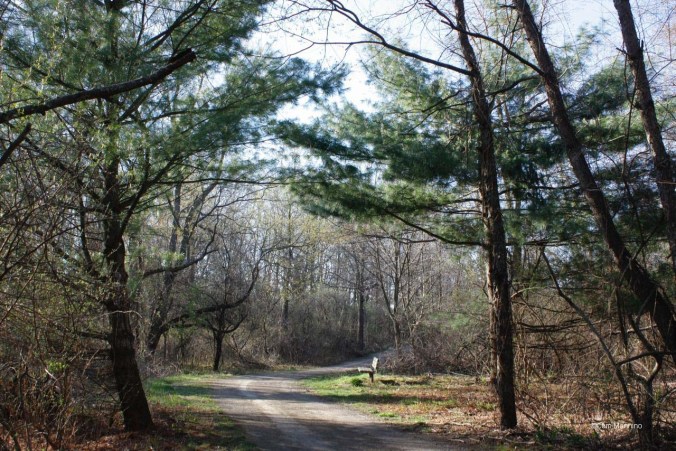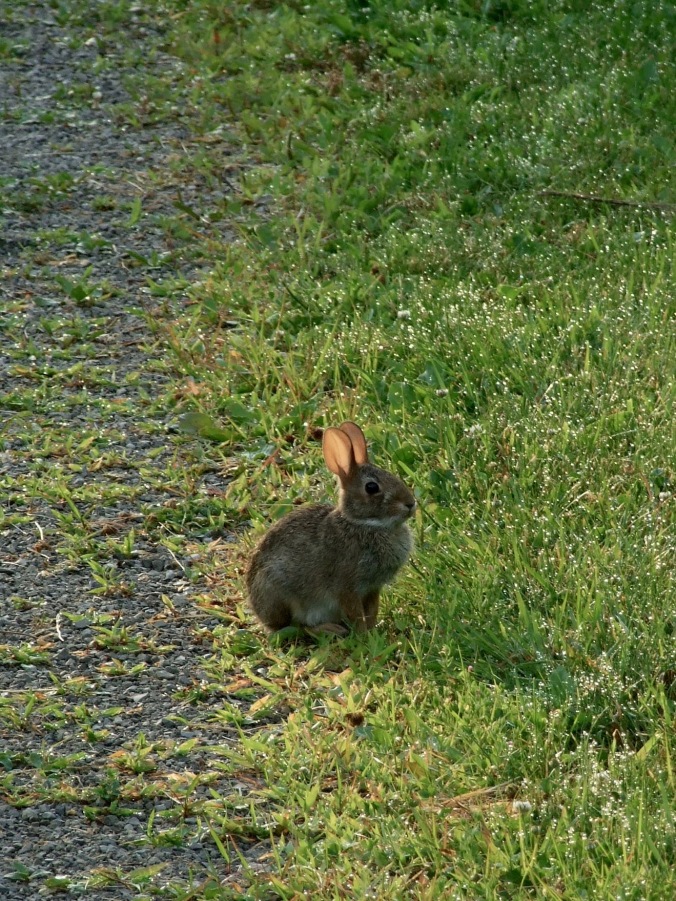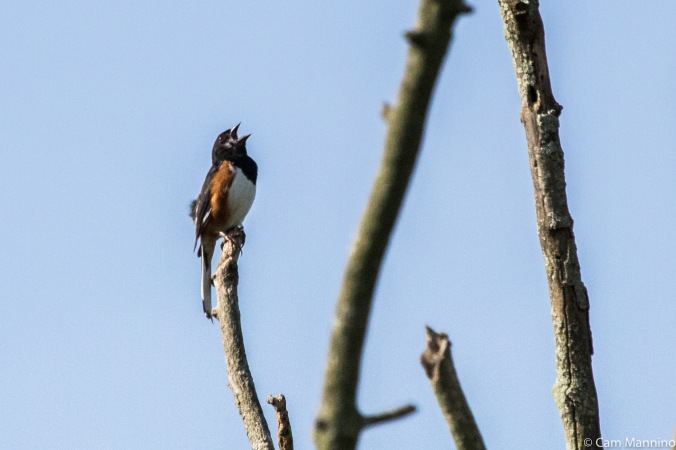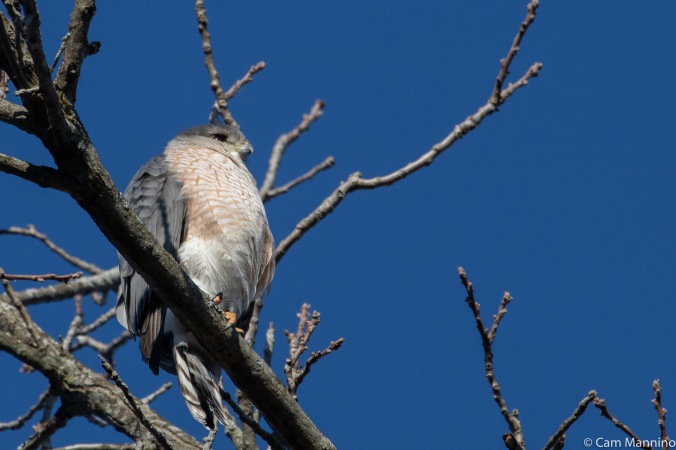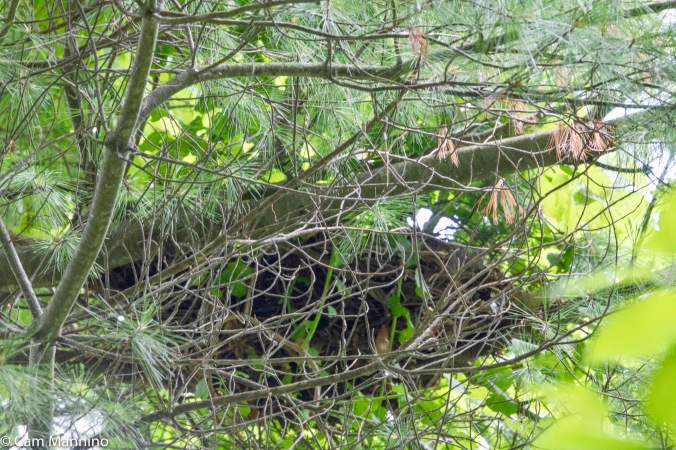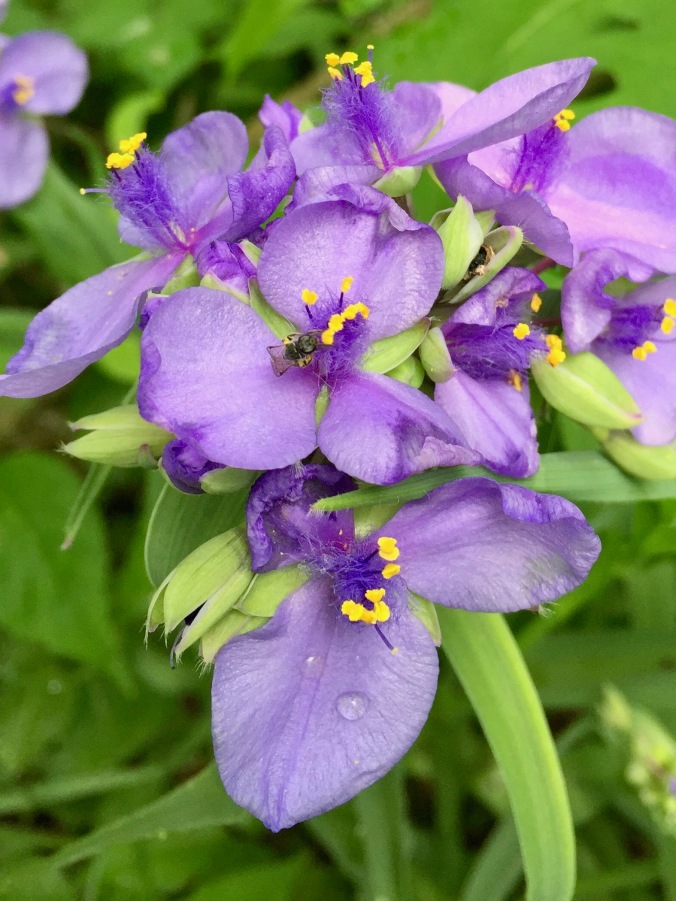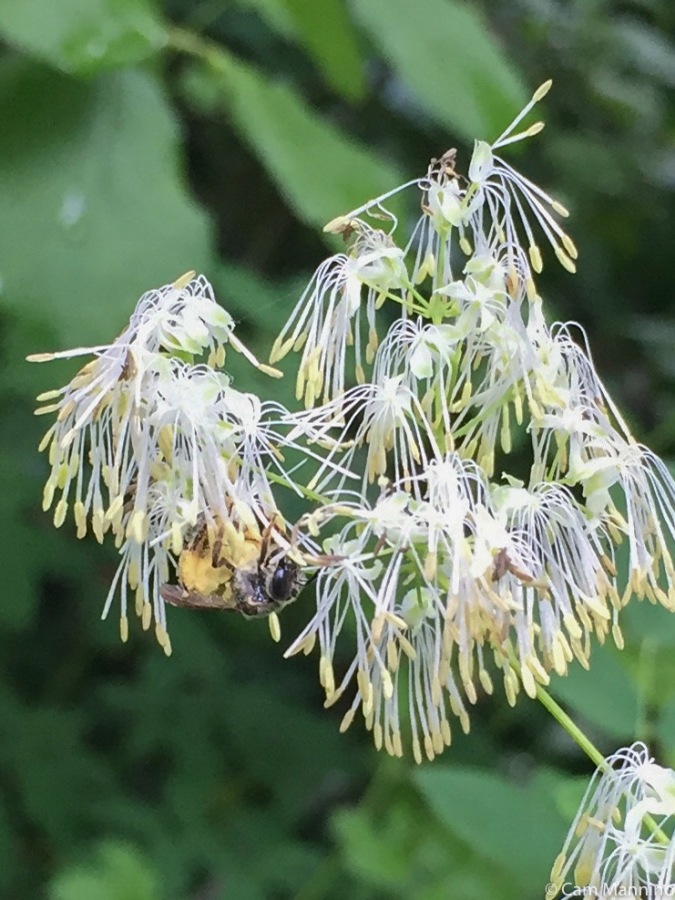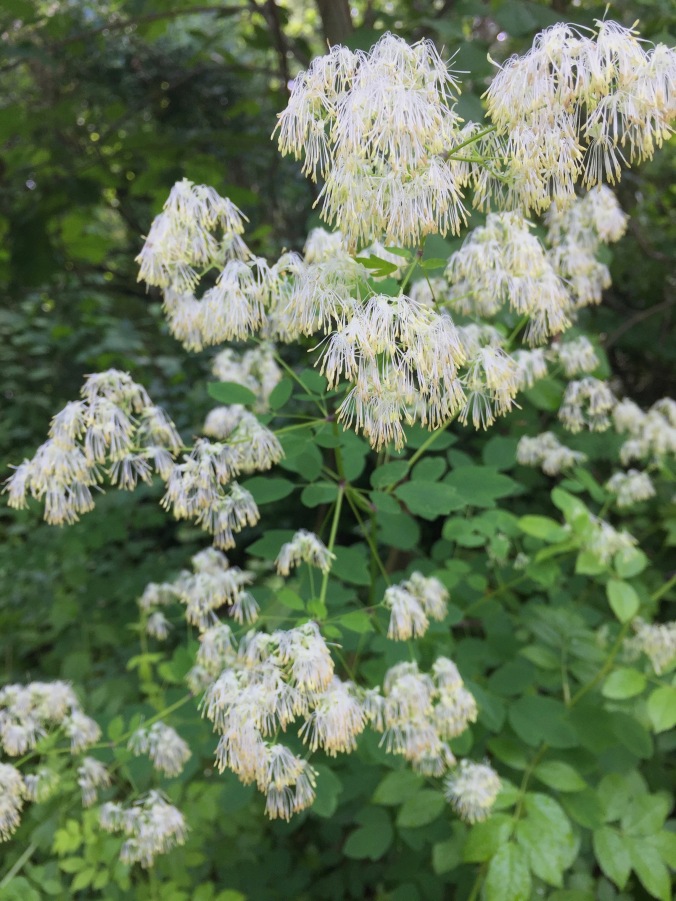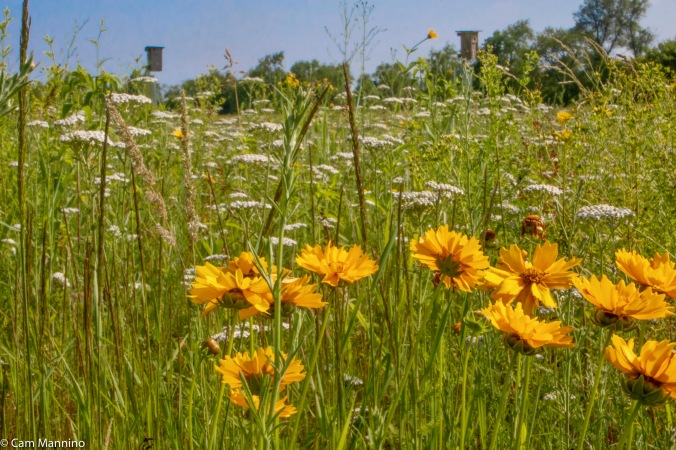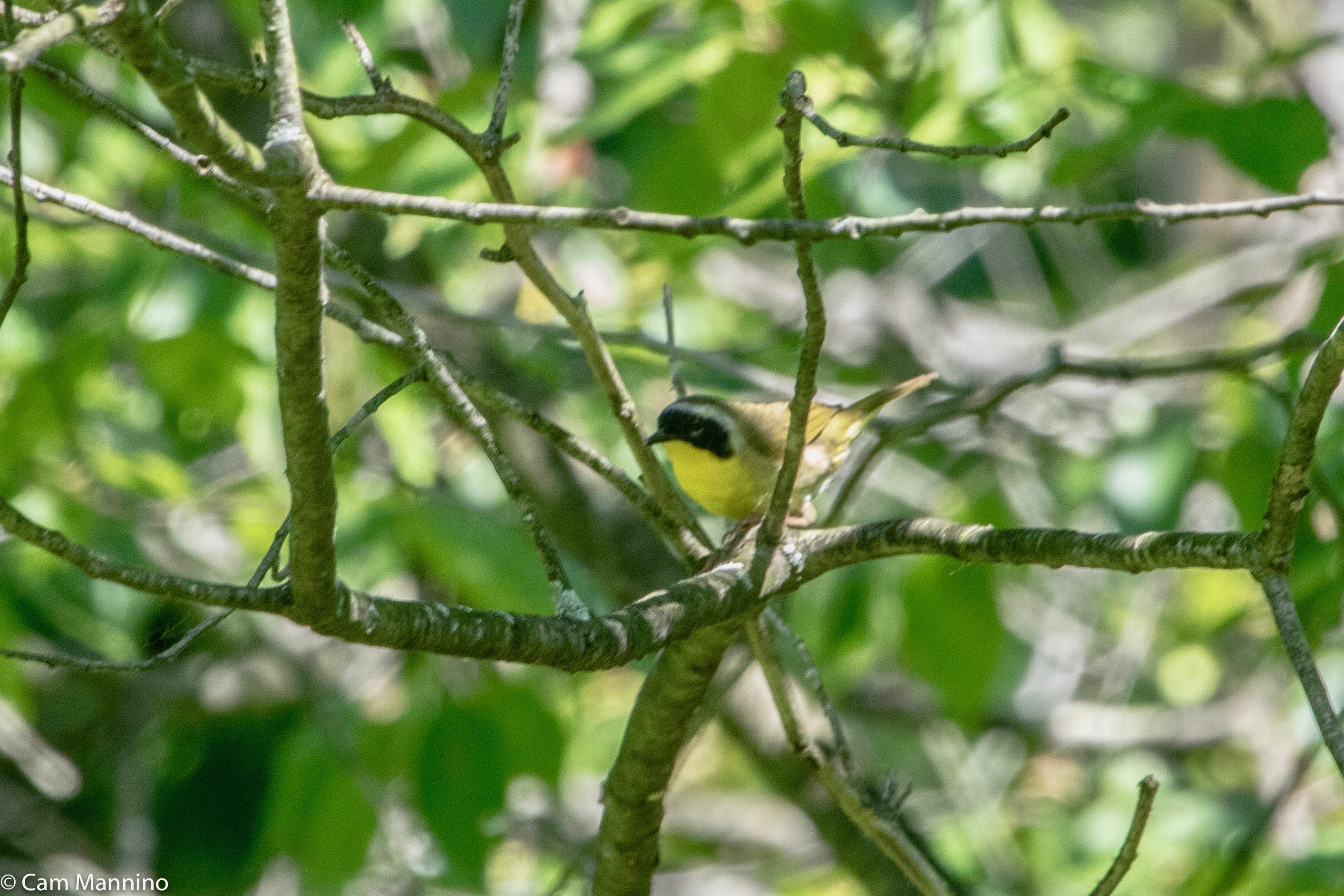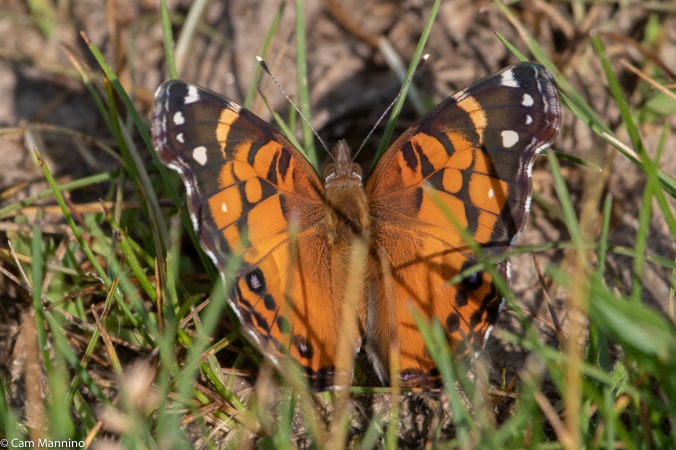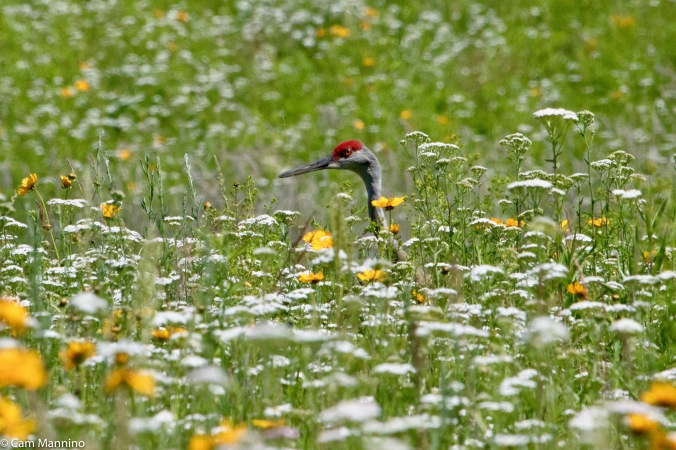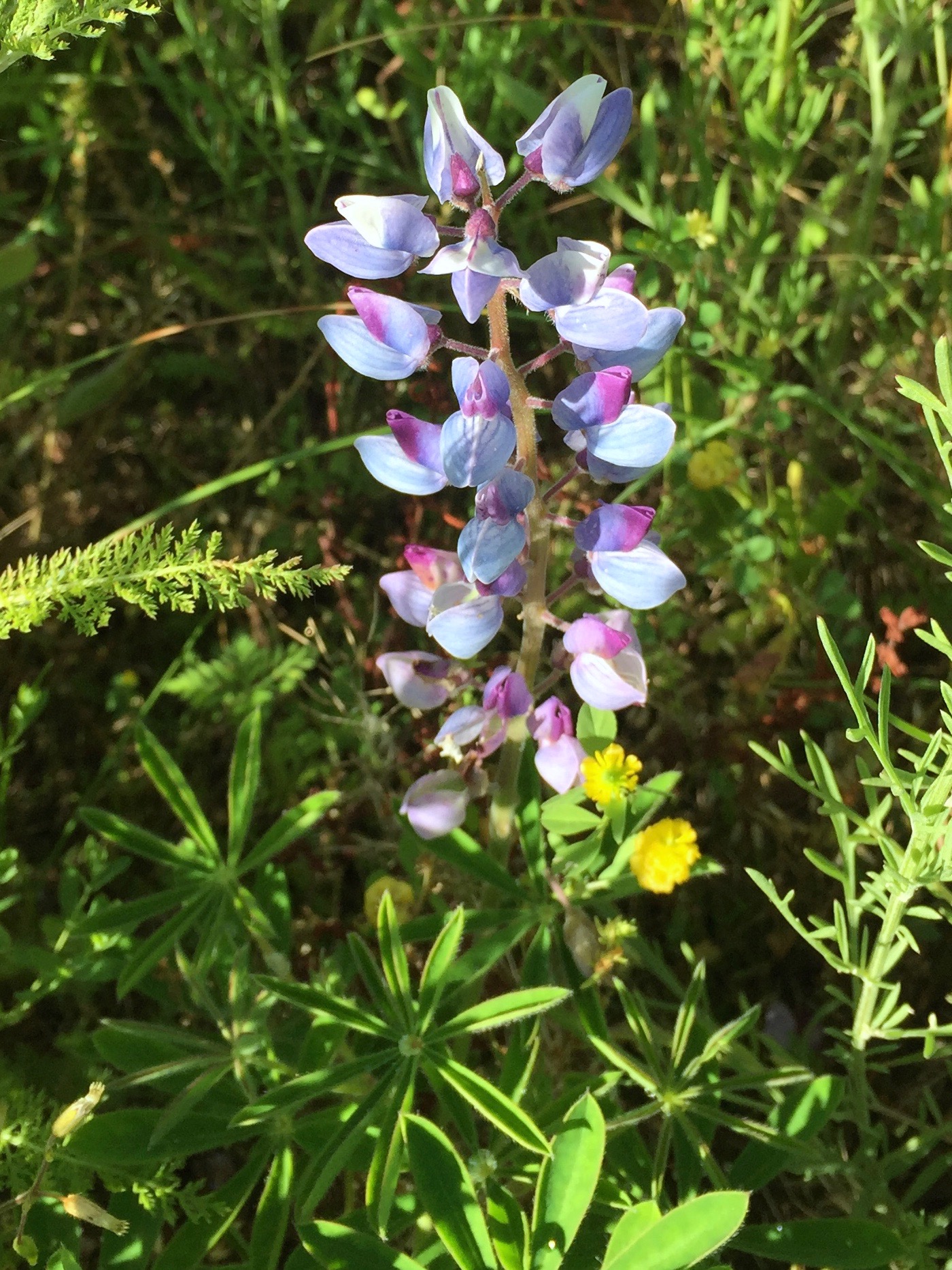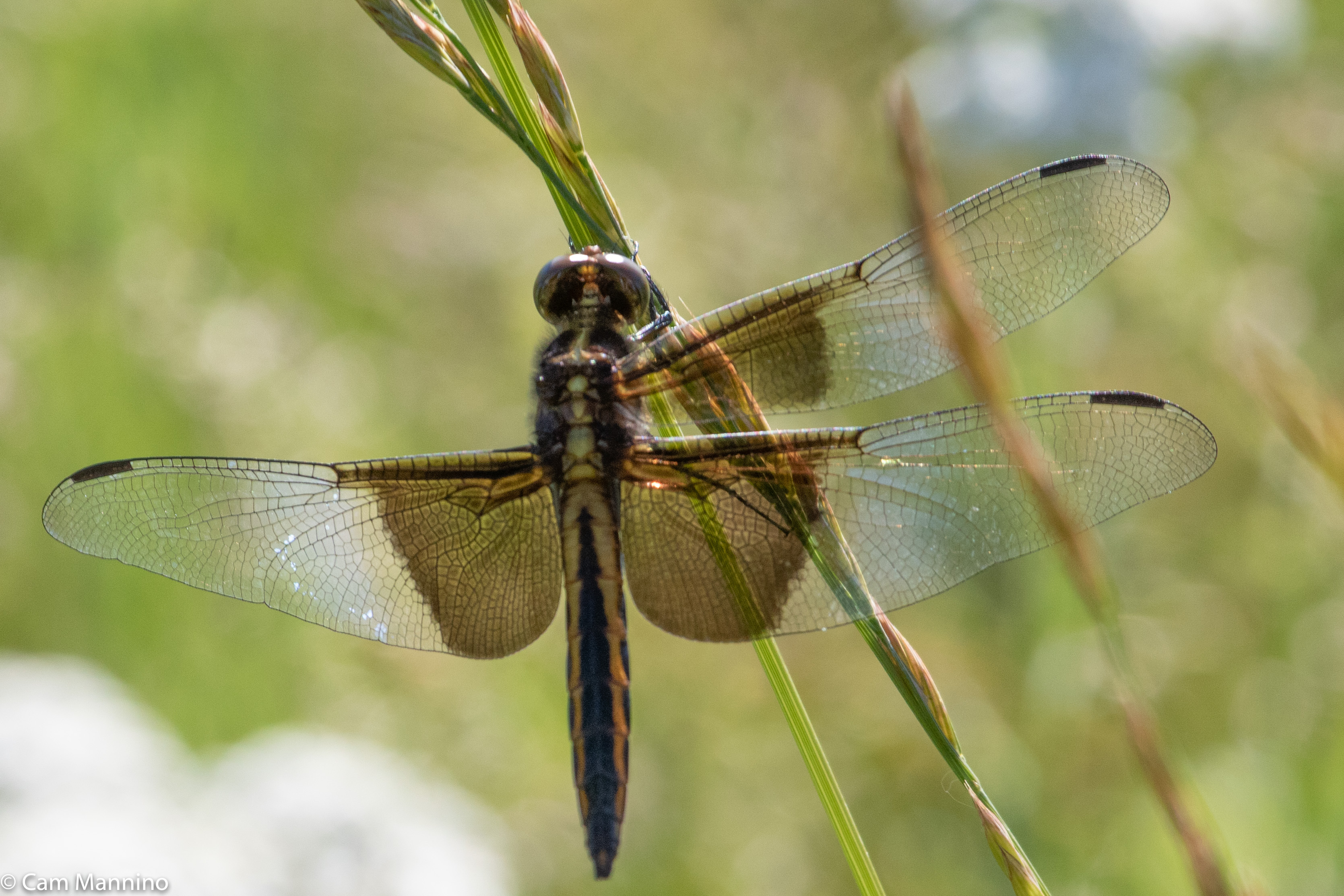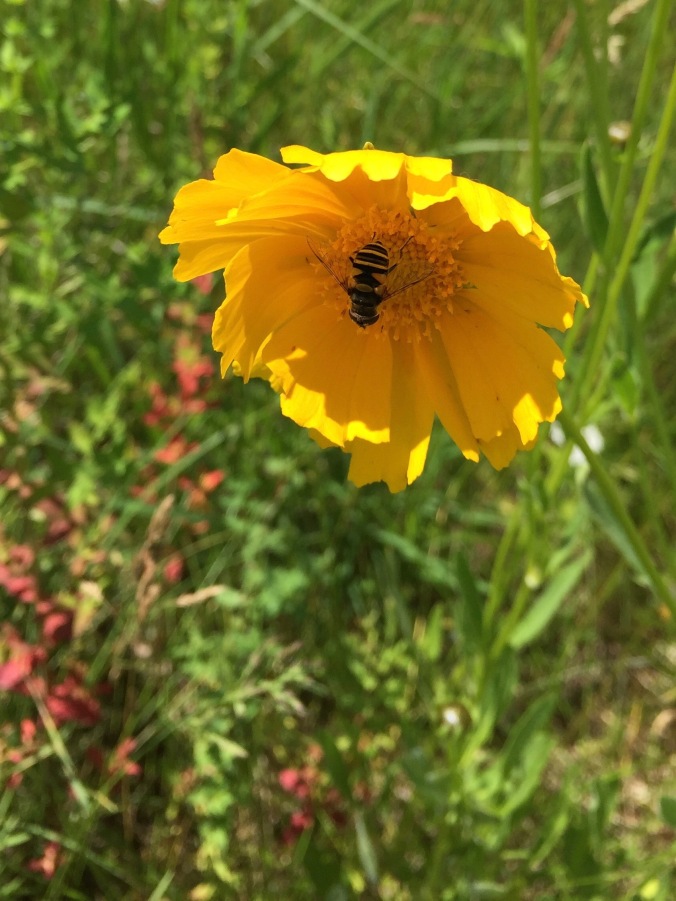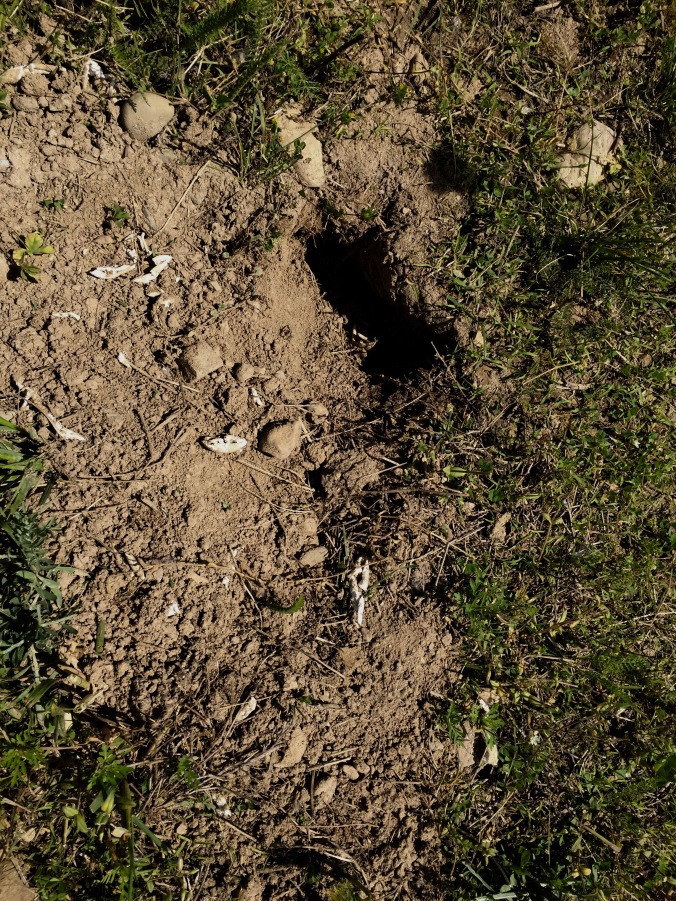I never know what I’m going to see or hear when I head into Draper Twin Lake Park. A large marsh separates the park’s two halves. If I start in the west side of the park, the shady trail is lined with moisture-loving plants and ends up at the fishing dock by the blue expanse of the lake. If I park at the maintenance building in the eastern half of the park, I ponder whether to circle left, passing a floating mat marsh, or head straight north to the beautiful restored prairie.
All the choices are good ones, so let me share what’s blooming, buzzing and singing in Draper’s quilt of habitats. And then you can do your own choosing some summer afternoon.
The Western Section: A Shady, Short Stroll to the Lake… or the Case of the Disappearing Wildlife!
I feel a bit like the fisherman with his story about the “one that got away” in describing the western side of the park this June. Whether alone or with fellow birders, I heard a lot more than I saw – though some of what I saw was wonderful. You’ll see what I mean…
The trail from the parking lot was green and cool on a hot day. My first encounter was with a small Eastern Cottontail (Sylvilagus floridanus) as I came around a bend in the trail. The bunny took one look at me and disappeared into the grass. In a fine article by naturalist Katie McKiernan in the Seven Ponds Nature Center newsletter, I learned more about the phrase “breed like rabbits.” The Cottontail female is usually pregnant while nursing her previous litter! They mate from March to August, so I’m guessing female rabbits look forward to the autumn! Since this year’s bunny dashed off without a selfie, here’s one from a few years ago that has the morning sun shining through its ears .
High in the treetops, hidden among the leaves, I could hear the signature “Drink Your Teeeeea” song of the Eastern Towhee (Pipilo erythrophthalmus). Here’s my recording. You may need to turn up your volume a bit.
Despite some serious neck craning, neither I nor my fellow birders could spot any of the four we heard. But here’s a photo of one singing at Draper in 2017. All this lush foliage from the heavy rain is amazing, but not always the best for bird spotting!
On a bird walk back in March of this year, the birding group was excited to see a pair of Cooper’s Hawks (Accipiter cooperii) in a bare tree near the lake. We’d seen one near a nest there in 2016 and wondered if they had returned to nest near the lake again. What an impressive bird!
However, construction on a new house near the park border was making a lot of noise that morning and we wondered if that would affect their nesting. On my June trip, I hoped to see one, but wasn’t optimistic since we hadn’t spotted them with the bird group in April or May. While looking for the elusive Towhee, I caught site of a large, saucer-shaped nest high in a White Pine. The nest was difficult to see from every direction, a choice spot from a bird’s point of view..
The nest didn’t look used; in fact it didn’t look as though it had been completed. Perhaps another missing creature? If this is the hawks’ abandoned nest, let’s hope they found a peaceful spot farther from the sounds of hammers and nails.
Luckily, other wildlife and some elegant plants did appear along the way to the lake. Lush purple native Spiderwort (Tradescantia ohiensis) bloomed in the dappled light under the trees. What appeared to be a Metallic Green Sweat Bee (genus Agapostemon) was gathering pollen on its hind legs. The contrast of the bright yellow pollen against the purple blossom must be a great signal to pollinators!
And nearby, I was delighted to see a bee among the drooping, elegant blooms of Tall Meadow Rue (Thalictrum dasycarpum). Since this pollinator seemed to be collecting pollen by smoothing it across its abdomen, it may have been a Leafcutter Bee (family Apocrita).
I just have to show you this whole plant. Isn’t Tall Meadow Rue striking with its drooping pom poms?
As I neared the lake, I was greeted by a stand of giants, plants 4-8 feet tall with huge leaves. It turns out to be Cow Parsnip (Heracleum maxiumum), a plant that hosts huge numbers of bees, wasps, beetles and flies over the course of the summer. It’s a biennial which means it produces leaves, stems and roots one year, then flowers and seeds the next. Cow Parsnip can cause blisters or iritation if its sap on your skin is exposed to bright sunlight. But according to Wikipedia, Native Americans found many uses for it medicinally such as poultices from the roots for swelling or bruises and mosquito repellent from crushed leaves. They even made children’s flutes from this plant after removing the outer surface. Sounds like this beautiful and statuesque plant is best seen in its natural setting, though, not in my garden!
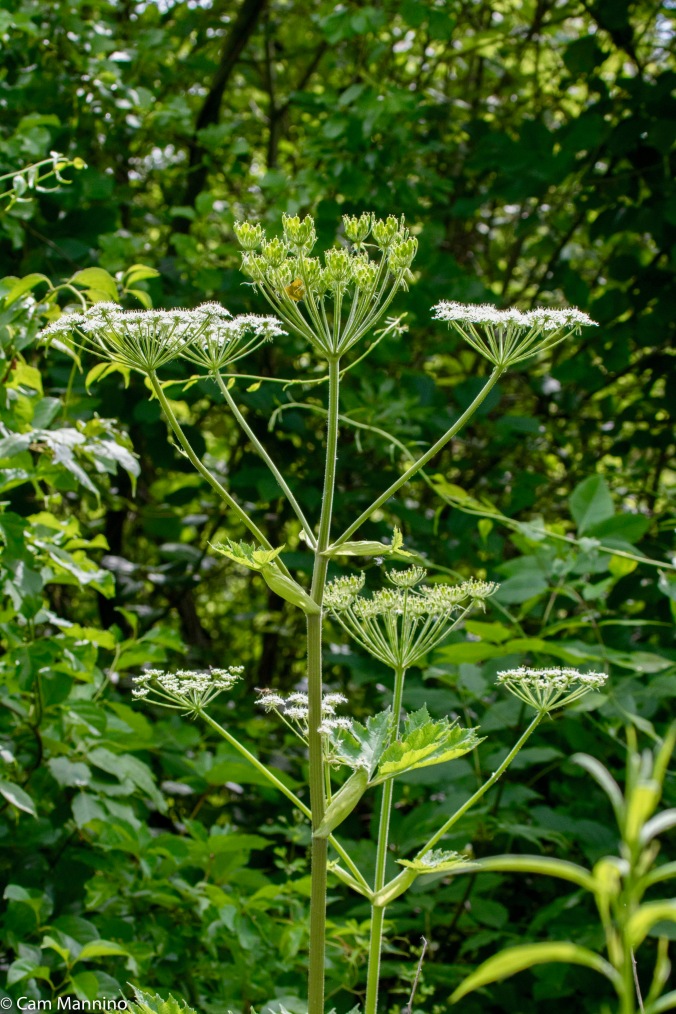
The 4-8 foot tall Cow Parsnip is gorgeous and host many pollinators, but its sap can cause sever blisters when affected skin is exposed to sunlight.
Down by Draper Lake, the Fragrant Water Lilies were beginning to bloom. The dragonflies will find them a great courting platform in the days to come, I imagine.
And among the aquatic plants near the fishing deck, a pair of Banded Pennant dragonflies (Celithemis fasciata) were already busy mating. The male clings to the stem and holds the head of the female. She clings to him, while curving her abdomen upward to receive the sperm. According to Wikipedia, this posture is appropriately called the heart or circle shape.
Since these dragonflies are in the Skimmer family (Libelluidae), the female will lay her eggs by “tapping the surface of the water repeatedly with her abdomen, by shaking the eggs out of her abdomen as she flies along, or by placing the eggs on vegetation.”
On the way back from lake, the birders and I saw an energetic little Chipping Sparrow (Spizella passerina) moving through the small trees. These small, pert sparrows with their chestnut cap and black eyeline prefer treed areas with open, grassy spaces – so you may have some on your lawn if you look closely!
A solitary walk one hot afternoon allowed me to share a moment with a young American Robin (Turdus migratorius). Where removal of invasive shrubs last year left some damp, open ground, the youngster landed and looked around. A Gray Catbird (Dumetella carolinensis) hiding in the shrubbery nearby sang its charming conversational collection of bird noises. I could never catch the Catbird out on a limb, so the Robin and I just spent a few quiet minutes together listening intently.
I discovered a modest little summer wildflower peeking out of the grass. Lots of insects drink nectar from the tiny blooms of White Avens (Geum canadense) and the leaves are hosts for the caterpillars of many of them as well.
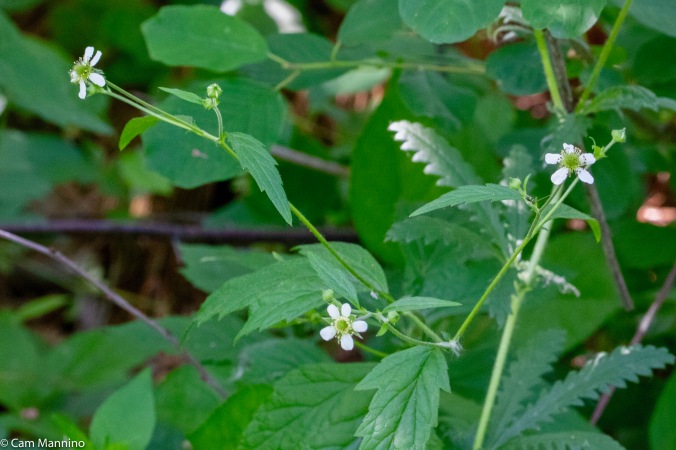
A modest summer native, White Avens, blooms in the partial sunshine at the edge of the trail. It hosts many insects even though its blooms are tiny.
A Midland Painted Turtle ((Chrysemys picta marginata) sat calmly tucked within its shell in the middle of the path as I headed back to the parking lot. I’m guessing it was a female looking for bare ground in which to dig a hole and lay her eggs. Though it wasn’t an ideal spot, I kept my opinion to myself and I left her to it.
The Eastern Section: A Longer Hike Among the Winged Beauties of a Sunny, Flowering Prairie
No question about which path to take this month! One Sunday, my husband and I headed straight out to the restored prairie, excited to see what was blooming and buzzing. Again this year, what a delight! Under a bright, blue sky, the slightest breeze made the thigh-high grass and wildflowers bow and sway to the musical accompaniment of bird song. What could be better?
On the Way to the Prairie
As we walked north, the music was supplied by two bright yellow birds. A male American Goldfinch at the tip of a snag trilled his quick, syncopated song that always seems to include a couple of loud “tweets.” And farther away, near the small marsh to the west, we spotted the Common Yellowthroat (Geothlypis trichas) who is more common this year than ever! The male loves to sing his “witchedy” song from shrubs or low limbs near a wetland. (Click on photos to enlarge; hover cursor for captions.)
- A male Goldfinch provided some of the musical “backup” for the dancing prairie flower.
- Common Yellowthroats appear in every park I visit this year! And that’s not a complaint, just an observation!
At our feet on the entrance path, a small American Painted Lady politely sat for her portrait in the short grass.
The Common Ringlet (Coenonympha tullia), an even smaller butterfly at less than an inch a half, was fluttering from one grass stem to another on the path, perhaps to thwart being snatched by a dragonfly or other predator. Finally it settled for more than a split second. Nice barbershop stripes on the antennae!
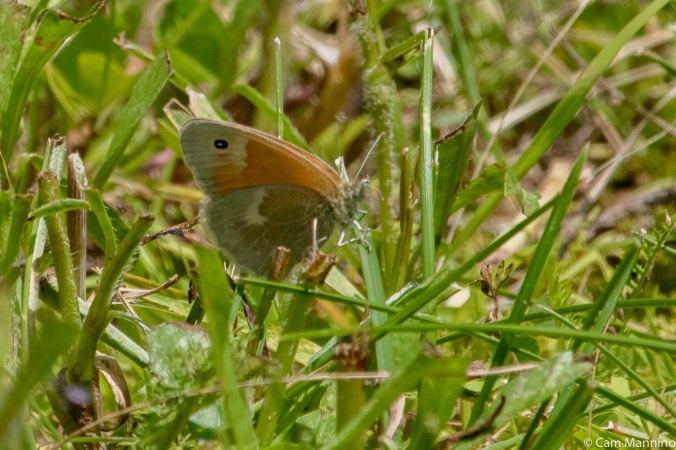
The orange and gray Common Ringlet moves quickly in the grass, probably to avoid predators like the dragonflies.
Birds of Various Sizes on the Prairie, including One Difficult Invasive Species
Reaching the prairie, I knelt among the tall grasses and wildflowers to take a shot and suddenly noticed the thin, gray neck and head of a Sandhill Crane (Antigone canadensis) just above the flower tops.
Actually, we ultimately saw three of them stalking slowly just under the crest of the flowering slope. The Cornell Lab of Ornithology informs me that in our region, juveniles stay with their parents until they nest again in April or May and then form foraging groups with other juveniles out on their own. Since these birds had adult plumage and were similar in size, I’m guessing this group may have been just such a cohort of young Sandhills.
On top of the hill, a female Eastern Bluebird (Sialia sialis) defended her nest, perhaps from invasive House Sparrows (Passer domesticus). This Eurasian species, once called “English Sparrows,” have been ravaging some of the prairie nest boxes. Volunteer nest box monitors have found boxes with beheaded nestlings, an attack typical of House Sparrows, which compete with our native cavity nesting birds. House Sparrows can ruin the eggs or kill the young of bluebirds, tree swallows and other cavity nesters. When we find a box with eggs, Cornell Lab of Ornithology’s Nestwatch program asks us to remove or addle them to help control the burgeoning House Sparrow population. Since they are so widespread and have such a harmful affect on native birds, they’re considered an invasive species and are not protected by the Migratory Bird Treaty Act. So although it makes us more than a bit squeamish, we monitors try to comply! (Thanks to iNaturalist photographer avepel for the House Sparrow photo.)
On a happier note, a Field Sparrow (Spizella pusilla) found some food for its young in the tall prairie grass, snagging what appeared to be a dragonfly. In my limited experience, Field Sparrows are shy during most of the summer. But when it’s time to lay the eggs and feed the young, they’re good providers and so are a bit more visible. You won’t see Field Sparrows in an urban or suburban setting like House Sparrows; they insist on wide open spaces! As a result, their numbers are currently in decline, so I’m glad we’re preserving prairie for them!
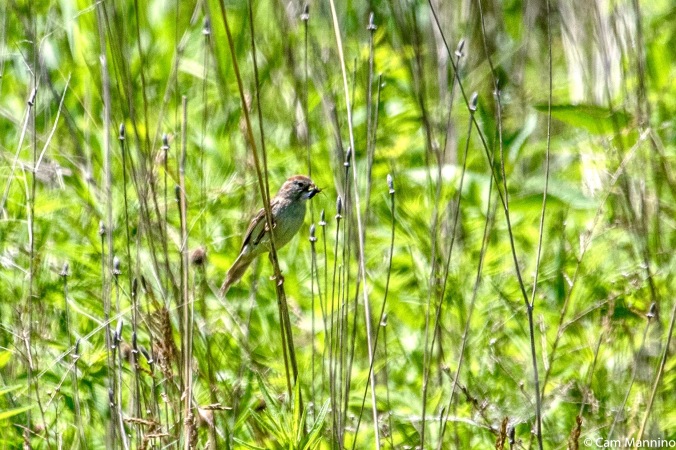
This Field Sparrow found a dragonfly to take back to the nest which is probably in a low shrub nearby..
An Eastern Phoebe (Sayornis phoebe) flew to the ground and returned to a branch, its tail characteristically pumping up and down, as it also looked for insects in the tall grass. I caught it just as it prepared for takeoff.
Dramatic Dragonflies, Tiny Pollinators, and Other Unfortunate Eggs
More native summer wildflowers bloom with each passing day as the restored prairie comes to full bloom. The color and scent are attracting little pollinators and the dragonflies looking for lunch! These three native wildflowers were planted as part of the prairie restoration and are particular favorites of mine.
- A childhood favorite of mine, Black-eyed Susan (Rudbeckia hirta)
- July, 2018 Wild Lupine (Lupinus perennis) has returned to the Draper prairie, too
- Foxglove Beard-tongue (Penstemon digitalis) blooms again on the prairie.
With my birding partners, I saw my first ever Calico Pennant dragonfly (Celithemis elisa) along the prairie loop path. Wow! We were all pretty impressed with this creature! The bright orange abdomen indicates a male and a young one, since the yellow spots near the wing tips turn red as they mature.
The elegant Widow Skimmer dragonfly (Libellula luctuosa) landed along the loop path as well. The yellow and black abdomen indicates that it’s a juvenile and the just-developing white patches beside the dark wing patch means that this one is a juvenile male. With the birders, I saw another juvenile at a similar stage and when I got home, wondered if we’d seen one who’d narrowly escaped a predator. It seemed to be managing quite nicely, though, flying with no difficulty among the stalks of prairie grasses.
- A juvenile male Widow Skimmer just developing the white wing patches of an adult.
- A similar juvenile probably after a narrow escape from a predator.
The Hoverflies (family Syrphidae) were busy finding nectar and inadvertently doing their large share of pollination.
Another little Hoverfly clasped the stamen of a non-native Common St. John’s Wort (Hypericum perforatum) blossom as it drank nectar. Dr. Parsons, the entomologist who helped me with hoverflies, says that hoverfly mouthparts are not like the long sipping straws of butterflies. Instead their mouthparts are soft with a hairy tip that sponges up nectar so that the mouth at the end of tip can draw it in. Normally the mouthparts are folded under the head, but they extend them like this little one is doing to reach for food. They can also liquify pollen with their saliva and drink it up as well. No wonder they distribute so much pollen!
One of the nest monitors reported seeing a Snapping Turtle ((Chelydra serpentina) laying eggs on the west edge of the north prairie. But when my husband and I came across a turtle nest along the western side, some hungry animal – perhaps a raccoon or coyote – had dug the eggs up for a meal. I can’t be sure we saw the Snapper’s nest. The egg remains look small enough to perhaps be those of a Painted Turtle or the much rarer Blanding’s Turtle (Emys blandingii ) that one of our bird monitors has seen twice on the trails as well.
And down in the short grass, a small Amber Snail (family Succineidae) moved languidly along the path, oblivious of all the prairie drama above. Isn’t it interesting that they have eyes on the end of those translucent tentacles on their heads?
Nature Asks that We Love It, Warts and All
It’s a temptation to romanticize who and what we love, isn’t it? For me, nature’s always been full of creativity, beauty, harmony – and I’m not wrong about that. Watch a cardinal stuff a seed into its mates beak to woo her. Or see a a mother raccoon cope with a treeful of young after a long night of foraging. Or learn how trees feed their young through the miraculous network of ancient underground fungi.
But as I’ve gotten older, I’ve come to accept that there’s a fierceness to nature, too – not just tornadoes and floods but everyday survival fierceness: an empty turtle nest; the caterpillar that consumes its live host; an owl swooping down on a baby rabbit; a dragonfly snatched by a field sparrow.
And then there are burgeoning invasive species introduced by humans: the house sparrow’s predation, the bittersweet vine choking the life out of trees, the zebra mussels changing the environment of the Great Lakes.
Nature’s solutions to life’s endless challenges and change may not always be pretty, but they have sustained our kind and all life on this planet for millennia. Each time I venture out into the natural world, I’m being shown the importance of honoring and preserving the complex, carefully balanced, interwoven systems that nature has worked out over eons. Until recently, humans were blind to those finely tuned systems and we have unwittingly done serious harm to them in multiple ways. But now we are beginning to see and understand what we’ve done. Now we know that these delicately balanced relationships can be restored if we have the will to do so. I’m glad our small green corner of the planet has made a commitment to doing just that.

